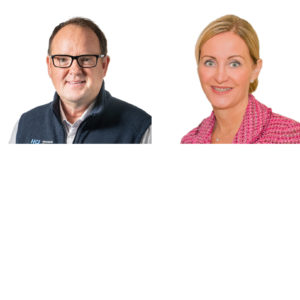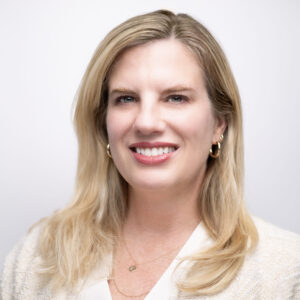Cleaning up: Success in housekeeping
Fingerprints on the doors, dust bunnies in the corners, unpleasant aromas, and plain old dirt can ruin a long-term care facility’s reputation and become marketing nightmares. People talk. A person’s senses send immediate impressions to your residents’ and visitors’ brains the moment they wake up in the morning or step through the door. Creating and maintaining positive physical environments is crucial to resident satisfaction and a facility’s reputation in the community. The housekeeping department maintains your facility’s good looks and cleanliness.
Don’t fall into the trap that if it looks clean, it is clean. Ernest Henry, III, director of Environmental Services, provides his insights into his facility’s housekeeping program. “Spring House Estates is an ACTS Retirement-Life Community in Lower Gwynedd Township, Pennsylvania, serving all levels of care,” Henry explains. The continuing care retirement community has approximately 515 residents among its 322 apartments, 52 assisted living rooms, and a 96-bed skilled nursing center. “The challenges and techniques for keeping our community looking top-notch vary for each level of care,” he says.
TRAINING AND CULTURE CHANGE
“Providing excellent commercial-quality cleaning services in a homelike atmosphere supports culture change,” says Henry. To reinforce that goal, Spring House provides culture change training to its staff and because it is a culturally diverse team, English as a Second Language classes are also offered. But the training and commitment doesn’t stop there. Because Environmental Services seeks to fulfill the residents’ wants and expectations, resident/staff learning circles are held to exchange ideas and keep everyone working toward the same goal-resident satisfaction. “We train our staff on how to use the best cleaning techniques to do the job right the first time,” explains Henry. For example, windows are washed using squeegees and a green glass cleaner. “Housekeeping staff is instructed to only clean windows from top to bottom, left to right,” he says.
“Our first commitment to reinforcing culture change is to get the work done quickly, with the least inconvenience to residents,” comments Henry. To that end, the cleaning over common areas is done between 9 and 11 a.m. so everything is ready for the day’s visitors and resident rooms/apartments are completed by 3 p.m. At Spring House Estates, the ES staff receives weekly in-house training and there is a monthly distributor or vendor class that instructs staff on the proper way to use new tools, products, or techniques.
MATERIALS AND EQUIPMENT
Henry acknowledges that the department is using more and more “green” materials. “One thing we’ve done is to convert to green-labeled toilet paper and multifold towels,” he says. The department is also trying to incorporate recycled trash bags into the operation, primarily in the offices. All mops and rags are microfiber and are easily sanitized.
At Spring House Estates, even the vacuum cleaners are green rated. “Our heavy-duty vacuums look like normal residential machines,” says Henry, “except unlike the household models that only have one motor, ours have three for deeper, more efficient results.”
Routine Hard-Surface Cleaning
Do a general cleaning of the surface.
Disinfect surfaces according to the following guidelines:
Read the product label to make sure that it will kill bacteria, viruses, and fungi.
Follow all product manufacturer instructions.
Be cognizant of toxicity levels.
Allow the product to dwell the recommended time.
Launder cleaning tools before using again.
HOUSEKEEPING IN ACTION
When any room/apartment is vacated, Environmental Services inspects the premises to see what needs to be done not only from a housekeeping perspective but also a maintenance one (repairs, painting, replacements, etc.). “After the maintenance issues are resolved, then housekeeping cleans up any debris left behind and then the room is completely sanitized from ceiling to floor and wall to wall,” explains Henry. Bathroom cleaning is done by using a 32-oz sprayer, not a spray bottle or wipe. “This tool isn’t used industry-wide, but it covers a wider area more efficiently and reduces waste,” says Henry.
Floor care is also enhanced through the encapsulation technique. According to Henry, an encapsulation machine sprays the cleaning agent into the carpet, where it attaches to the dirt, and crystallizes. In about 48 hours, the agent is vacuumed up leaving a cleaner carpet. “It also is a safer technique because the carpet is left damp, not wet as with regular shampooing,” he adds.
In assisted living, furniture is not an issue because, of course, it goes with the resident. However, skilled nursing rooms present a different set of circumstances. Mattresses are nonporous so they are quickly sanitized. Prior to disinfection, the entire bed is thoroughly cleaned following product manufacturer instructions, allowing an appropriate dwell time for the disinfectant to achieve optimum results. “When the process is complete, all cleaning tools are disinfected before they are used again. We never use the same tools to clean multiple beds,” Henry stresses.
In the facility’s households, kitchens are cleaned three times daily. The Environmental Services department works closely with culinary staff in these satellite kitchens. Culinary staff do all the equipment sanitizing and Environmental Services cleans and disinfects all other surfaces. “My staff is responsible for two of the three daily disinfections and the culinary staff takes charge of the third cleaning,” Henry explains.
Keeping a facility clean is a 24/7 operation, if it’s done right. Long-term care facilities need to remain vigilant in their housekeeping procedures so the facility looks just as good as the attention the residents receive. Caring for a frail and susceptible population is the mission of long-term care. Creating an environment that is clean, safe, and sanitized is one of the external keys to helping caregivers accomplish their goals. LTL
Long-Term Living 2011 February;60(2):50-51
I Advance Senior Care is the industry-leading source for practical, in-depth, business-building, and resident care information for owners, executives, administrators, and directors of nursing at assisted living communities, skilled nursing facilities, post-acute facilities, and continuing care retirement communities. The I Advance Senior Care editorial team and industry experts provide market analysis, strategic direction, policy commentary, clinical best-practices, business management, and technology breakthroughs.
I Advance Senior Care is part of the Institute for the Advancement of Senior Care and published by Plain-English Health Care.
Related Articles
Topics: Articles , Operations











